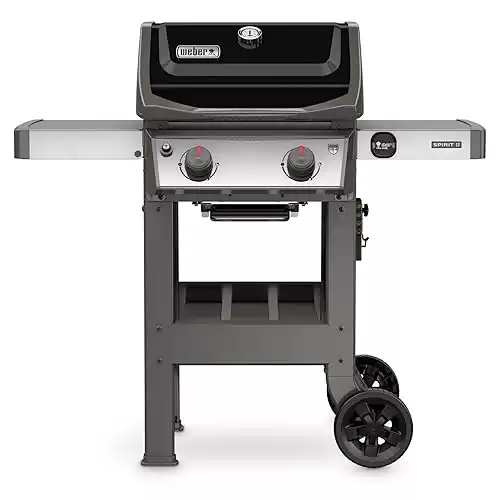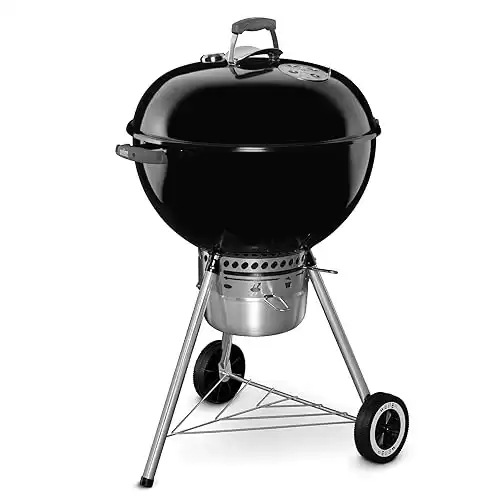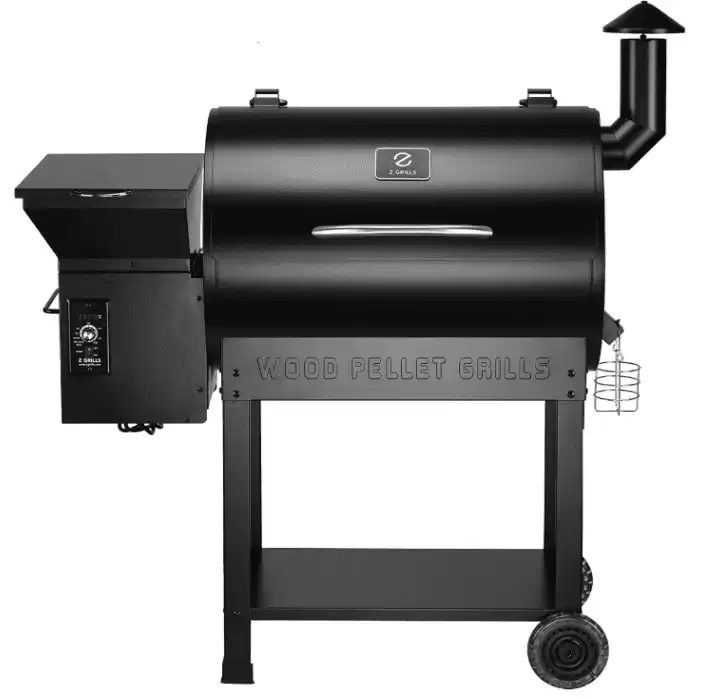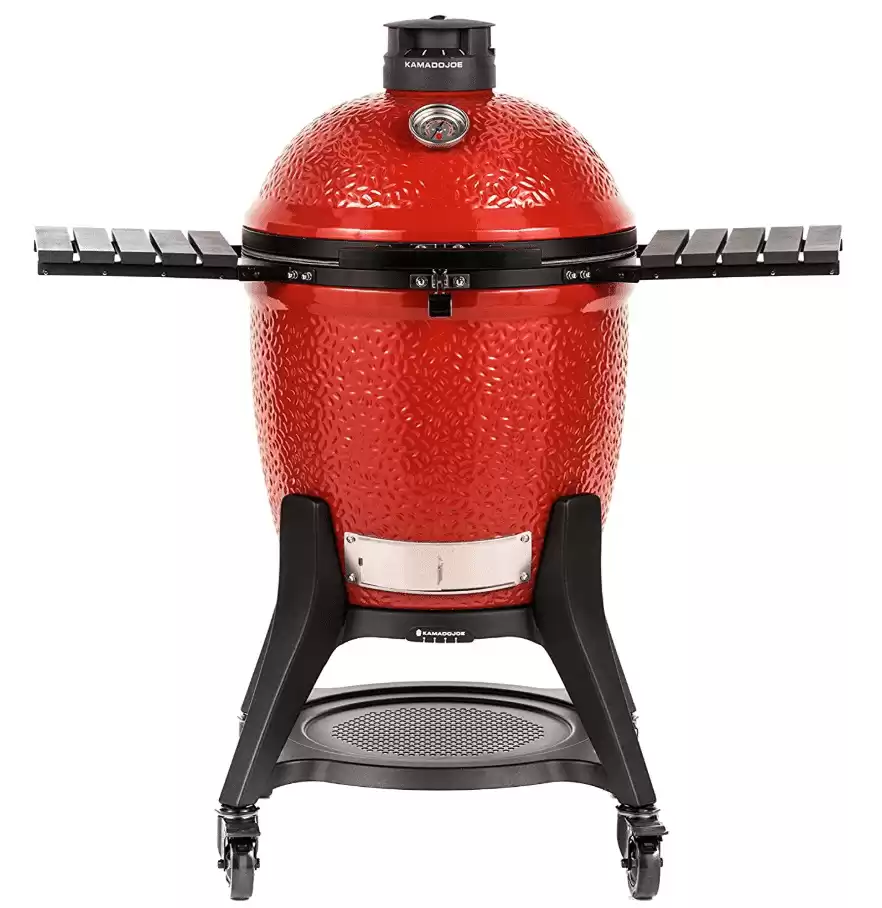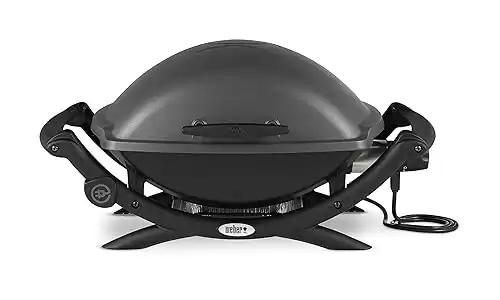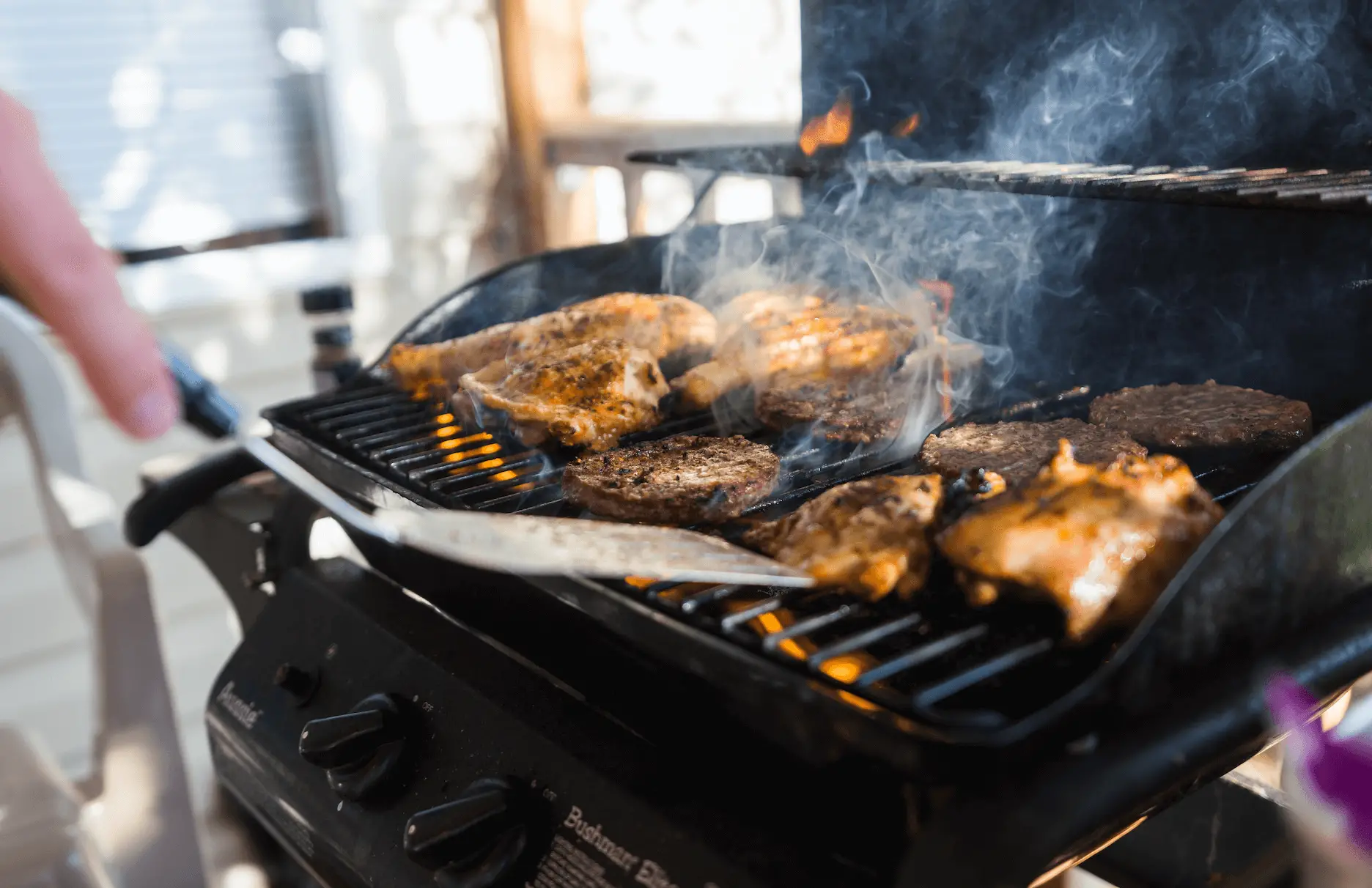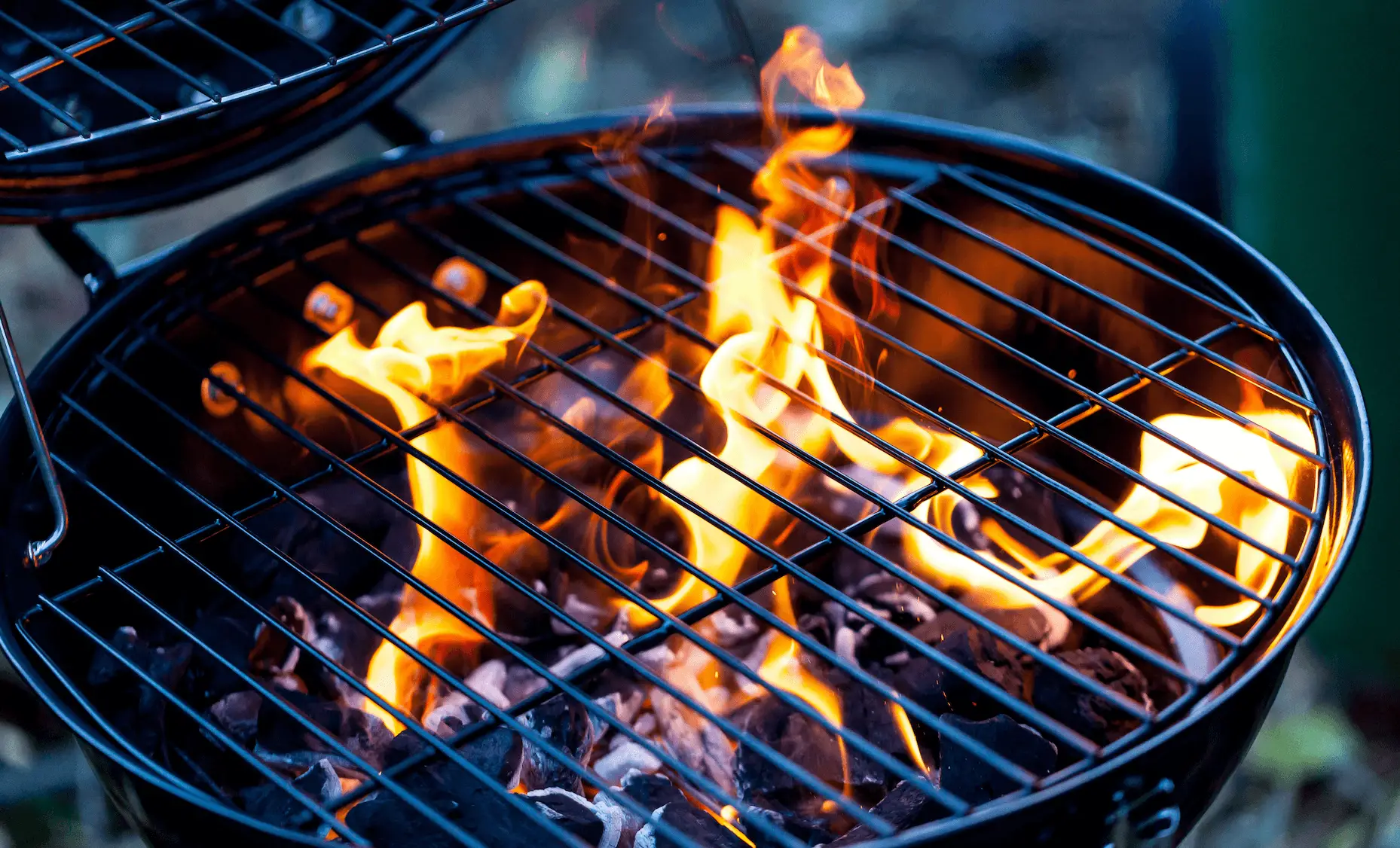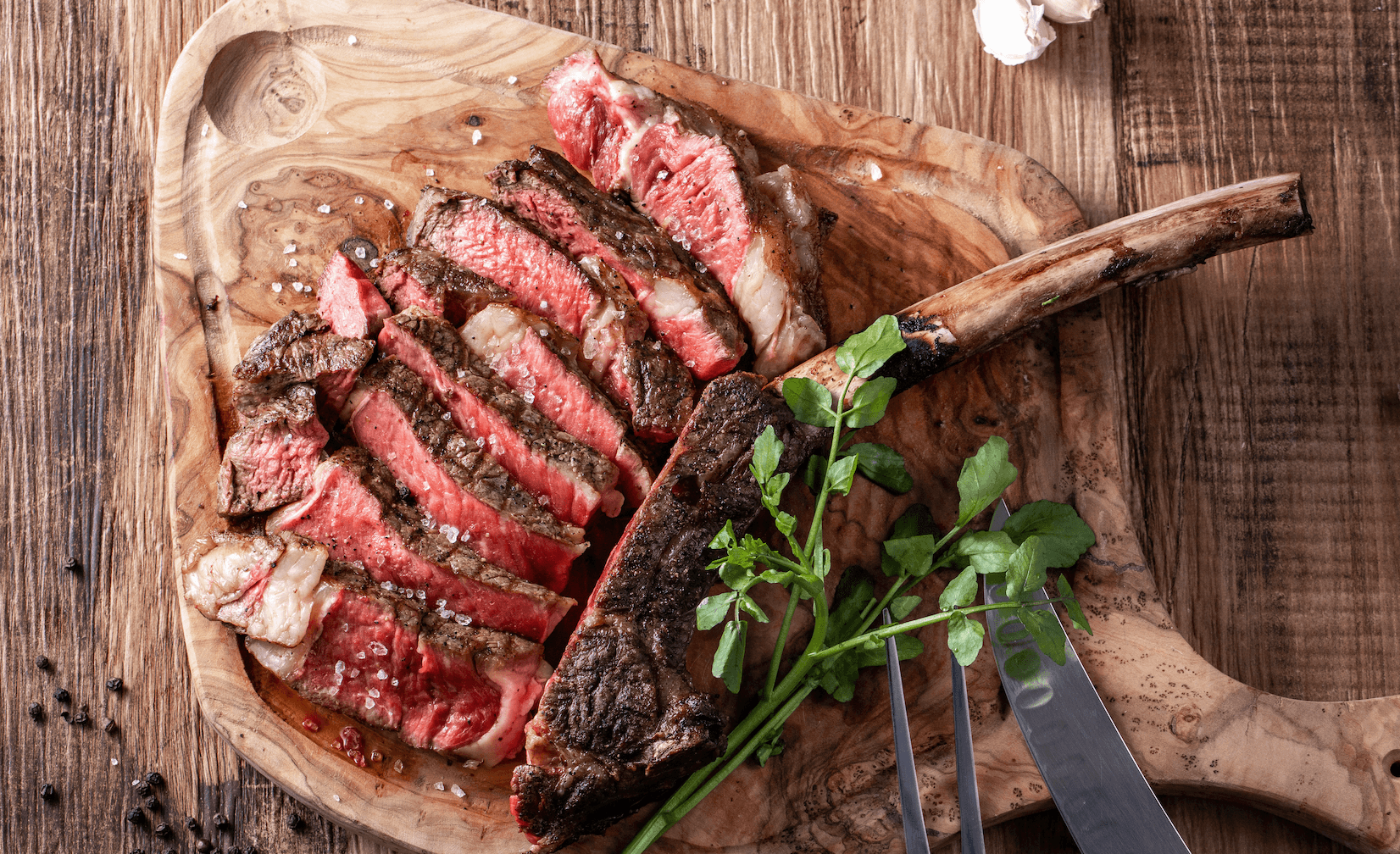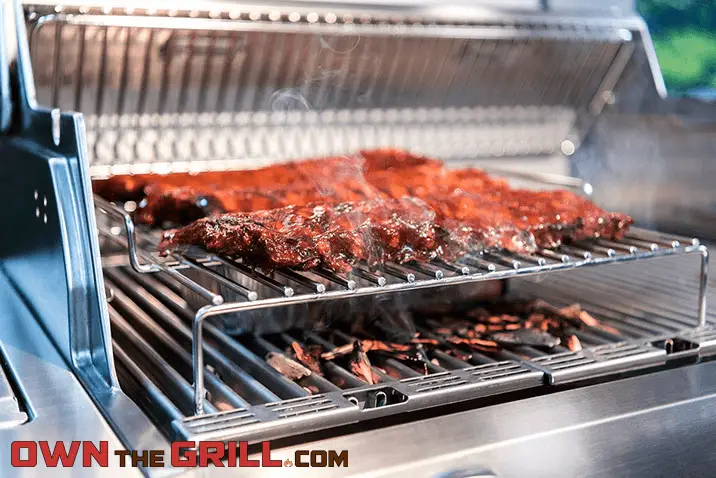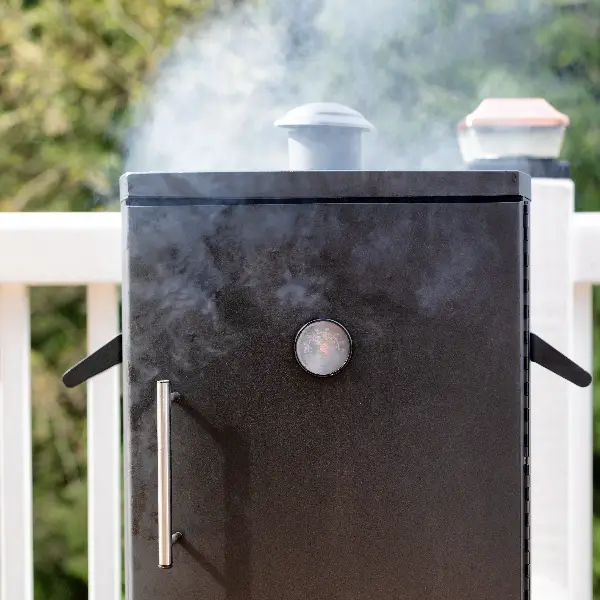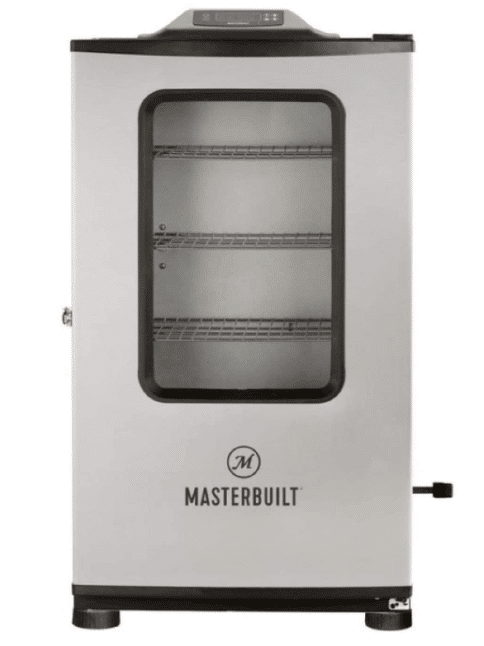This content contains affiliate links. If you make a purchase after clicking a link on this page, we might receive a commission at no cost to you.
Choosing the right grill is one of the most important decisions you’ll ever make. It’s right up there with buying a house, buying a car, and choosing a significant other.
Alright, that last part is a little bit of a stretch! But in all seriousness, there are countless grill configurations and options out there – and it can be overwhelming to choose one of them to best suit your needs.
There are lots of factors to consider when it comes to comparing different types of grills. Surface area, which types of cooking they can do, temperature control, and many other things come into play.
We’ve created this resource to highlight all of the different options on the market, with the hopes of equipping you with the knowledge to know and choose the perfect grill for your needs.
Remember, at the end of the day it all comes down to your personal preference. But in the rest of this post, we’ll get into the different types of grills and highlight the pros, cons, and distinctions of each.
Types of Grills
Gas Grills
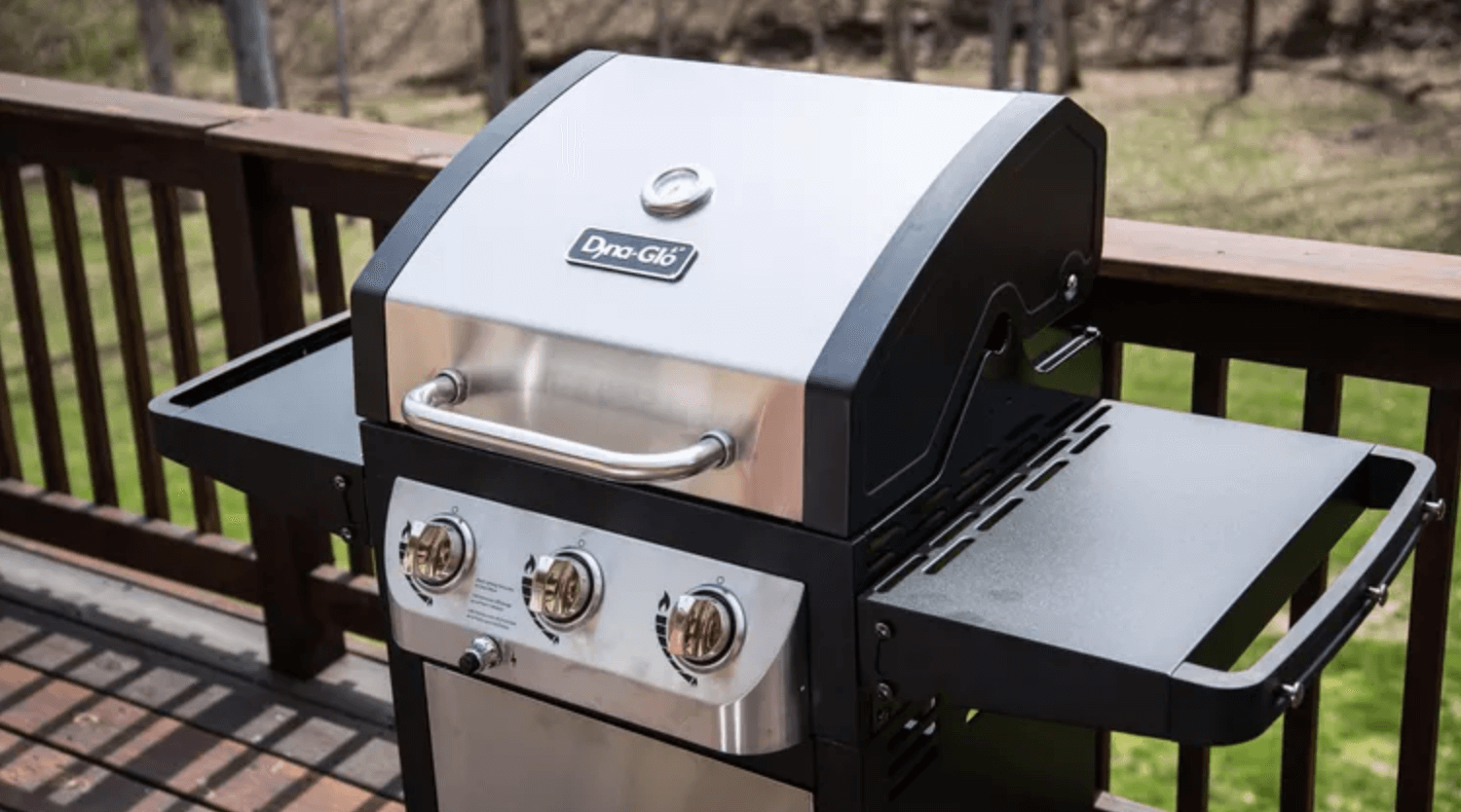
Gas grills are the most widely used type of grill across the world today. It’s not hard to see why; they’re convenient, efficient, and versatile.
They’re the perfect type of grill for the casual griller or beginner due to how easy they are to use. With minimal effort, a gas grill can reach high temperatures quickly, and can make some excellent quality food for your family and friends.
That’s not to say the pros don’t use gas grills – far from it. You’ll find some top pit masters utilizing easy-to-use gas grills at their homes and restaurants.
Gas grills are also very straightforward and easy to clean. For me personally, this is a huge turn on because the last thing I want to do after enjoying a delicious meal is to have to clean a bunch. Within the gas grill genre there are a few different variations:
Propane
Gas grills are fueled by either propane or natural gas. Propane grills are in nature the more portable of the two, because propane is stored in portable tanks that can typically be bought at your local supermarket. Propane grills are super easy to use, but you’ll need to refill your propane tank from time to time.
Natural Gas
Natural gas grills connect to your home’s built in natural gas line, and are often used for built in grills. However, some freestanding grills (including one of my grills!) can be fueled via a natural gas connection. Natural gas grills eliminate the need to ever need to go to the store to buy fuel. You just pull it out of the preexisting gas lines in your house.
Infrared Grills
Infrared grills are powered via either propane or natural gas, and rely on infrared technology which spreads heat evenly across the entire grilling surface. This happens extremely fast, and the infrared technology also prevents the flames from reaching the grates. Infrared grills are known for zero flare ups, super even temperatures, and are great for searing in addition to “normal” grilling needs.
Flat Top Grills
Flat top grills are typically fueled by a propane connection, and distinguish themselves with a flat, griddle surface. As far as food results go, flat top grills tend to make juicier food because none of the drippings fall below grates and vaporize.
The tradeoff is that flat top grills will typically make slightly less flavor rich results compared to a grill with grates for the exact same reason that the drippings don’t vaporize and smoke back up into your food.
Flat top grills are a fantastic way to make breakfast, burgers, sauté veggies, and many other practical uses.
Freestanding
A freestanding gas grill comes with the added benefit of mobility. They are not attached to anything our built in to a cabinet, so you can move them around freely and as needed. Freestanding gas grills can be powered by either propane or natural gas.
Built-In
As you’d expect from the name, built-in gas grills are built in to a permanent structure like a cabinet or island cooking base. Built ins are perfect for those looking to take their outdoor cooking space to the next level – and they’re typically high end grills or BBQ Islands.
With proper design, you can maximize space efficiency and have a powerful grill fit into a convenient section of your outdoor kitchen. Built-in gas grills are typically fueled by natural gas connections.
Gas Grills Pros and Cons
Pros:
- Gas grills can consistently grill delicious food – anything from beef, fish, poultry, veggies, and much more.
- Super convenient. Gas grills heat up and cool down quickly and require minimum prep time or clean up time. If you envision yourself throwing food on the grill after work, a gas grill is perfect because you don’t have to deal with building and cleaning up a fire.
- There is a gas grill for everybody. You can find gas grills at budget prices on one hand. On the other you can obviously spend quite a bit on a gas grill – some larger grills with lots of custom features get up into the $5,000+ range. You can also find grills at every price point in between!
- Fuel costs are less expensive compared to charcoal or pellet grills.
Cons:
- Foods cooked on gas grills lack that extra smoky flavor that many of us love.
- Poorly made units have a tendency to distribute unevenly and inconsistently. Be sure to look for units that are built from sturdy materials like stainless steel. Cheap units can have a tendency to heat unevenly.
Gas Grill Recommendation for Beginners
Charcoal Grills
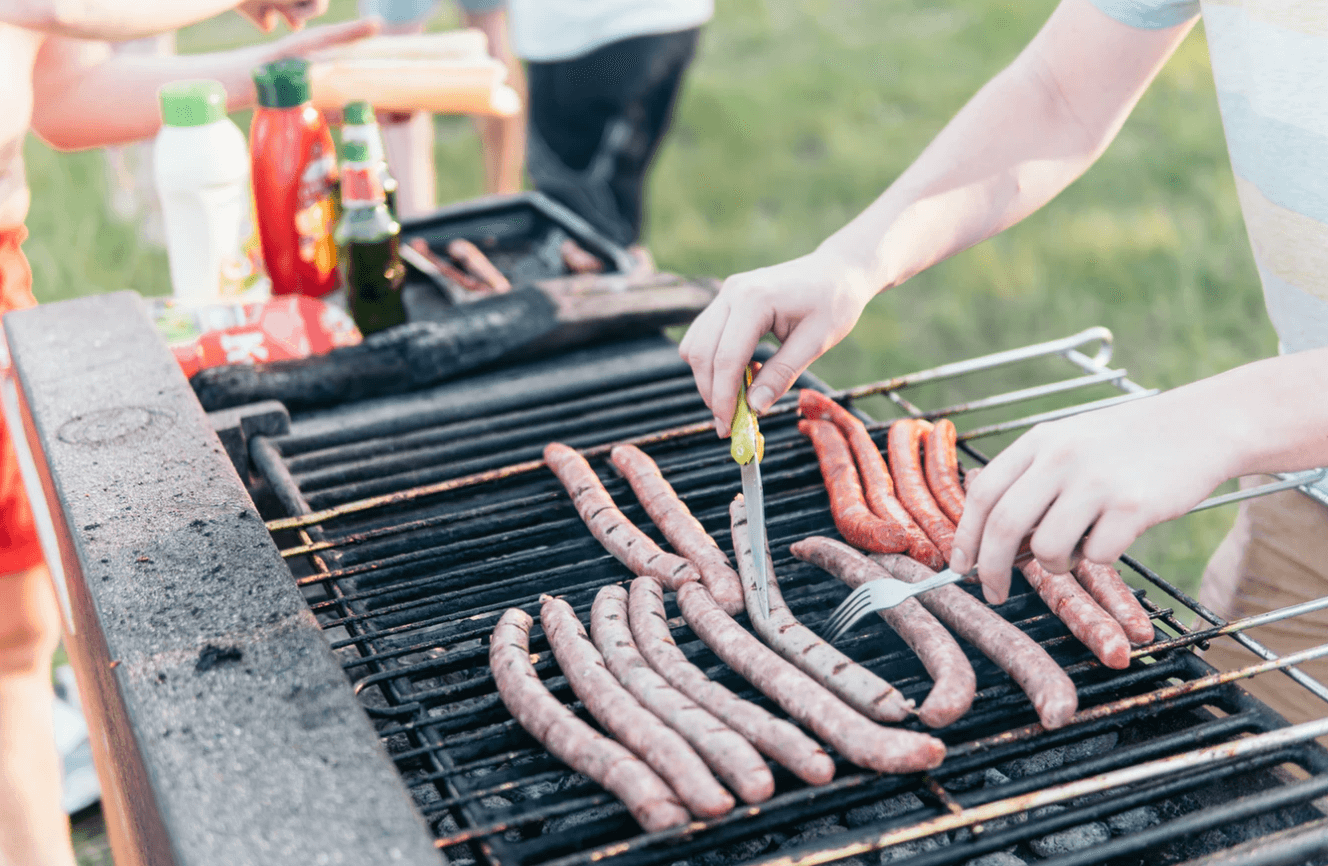
Charcoal grills are also one of the most widely used types of grills. They differ from gas grills in how the heat is fueled. With a charcoal grill, you use charcoals bought from a store as the fuel source for your fire. You light the coals, and create a bed of heated coals which cook your food.
The process of lighting coals and managing the fire to a proper temperature is typically pretty time consuming. For pit masters who like to show a little tender love and care, this is a perfect way to spend a Saturday.
The best part is, the results of a properly meal cooked on a charcoal grill are fantastic. You can expect the classic smoky BBQ flavor many of us love from foods cooked on a charcoal grill.
Traditional Charcoal Grills
A traditional charcoal grill has the traditional barrel style design that is common amongst all types of grills. These grills are typically made from thick cast iron and have adjustable charcoal pans so that you can easily manage your fire. Food made in a well designed traditional charcoal grill is hard to beat!
Kettle Grills
Kettle charcoal grills are typically much smaller in size and grilling surface area than a traditional charcoal grill. They get their name from their distinctive kettle shaped build. They’re usually lightweight enough to take on the go for camping trips or tailgating, and are a great option if you’re looking for that traditional smoky BBQ flavor.
Charcoal Grills Pros and Cons
Pros:
- The go to option if you want extra flavor for your food. Charcoal grills are a great option for experienced grillers or those who don’t mind investing time into managing your fire.
- Some models, kettle grills in particular, are extremely lightweight and perfect to take tailgating or camping.
- Generally speaking, charcoal grills are cheaper compared to other types of grills. That being said, it’s important to buy a charcoal grill that’s well made, even if it’s a few extra bucks. The last thing you want is a poorly made grill that isn’t sealed properly and doesn’t retain heat.
- You can experiment with different types of wood chips for different flavor profiles on your grilled food.
Cons:
- Fire management takes some time investment. Heating charcoals to the proper temperature can take about 30 minutes. You also have to spend time cleaning ashes and putting out your fire after you’re done cooking.
- It’s especially hard to maintain consistent temperatures in cold or windy weather.
- Fuel (i.e. charcoal) to cook costs more than natural gas or propane.
Charcoal Grill Recommendation for Beginners
Pellet Grills
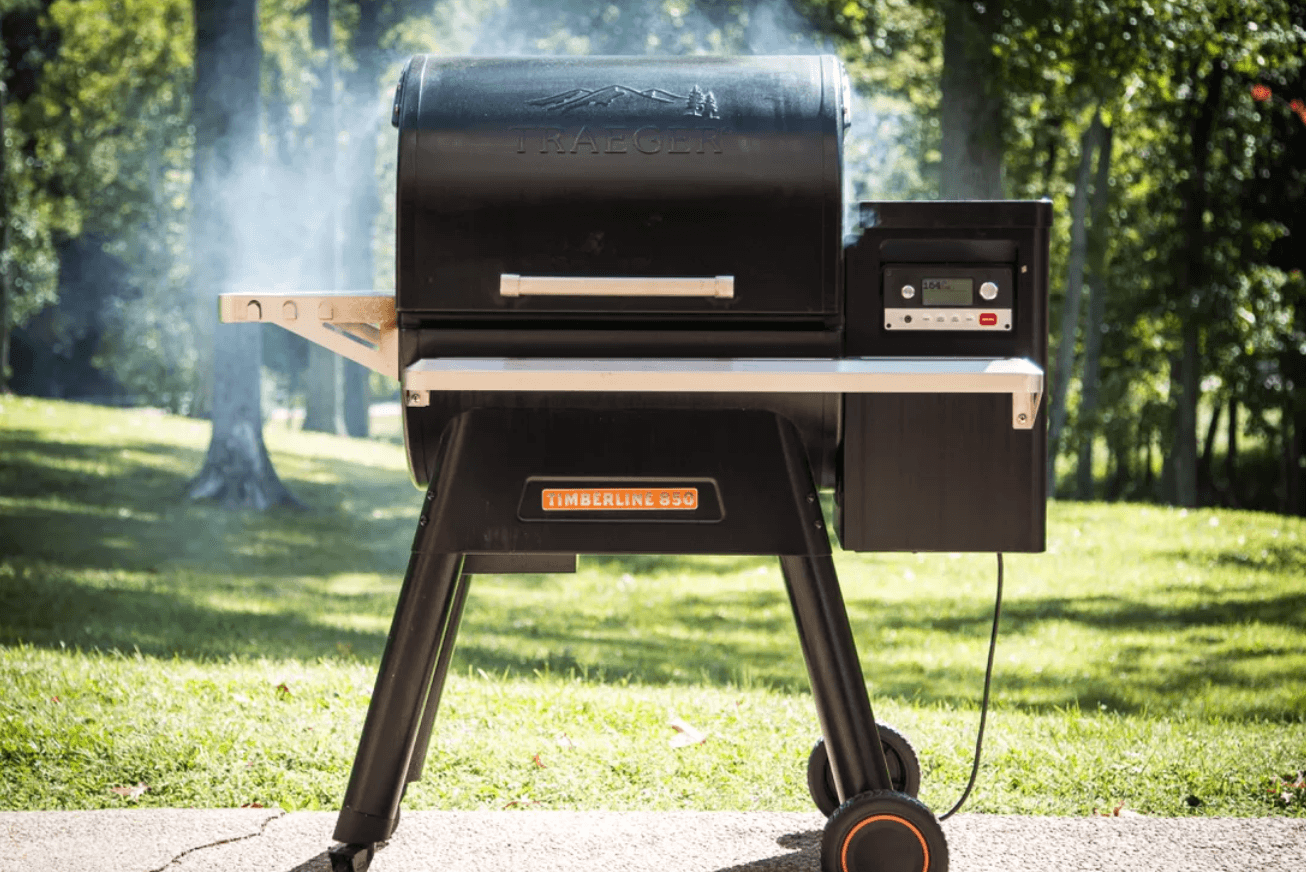
Pellet grills are a class of grill that are fueled by little flavored wood pellets. So, pellet grills are technically wood fire grills – and the results of your grilled food will show it with delicious flavor. Wood pellets come in a bunch of different flavors; Hickory, Maple, Cherry, Apple, Mesquite, and Pecan are all popular wood pellet flavors used for pellet grills.
From my observation, pellet grills are also one of the most technologically advanced types of grills. Many of the top brands of pellet grills (like Rec Tec, Traeger, or Camp Chef) are loaded with features that make grilling delicious food incredibly easy.
You can manage every aspect of your grill from a phone application – which comes in super handy for long low and slow cooking BBQ.
Pellet grills combine the best of many worlds – they’re convenient, provide smokey flavor to your food, and they’re definitely a set it-and-forget it style of cooker. Plus, you can make everything from a seared steak to a BBQ brisket on a pellet smoker.
It cuts both ways though. While pellet grills have all of these great qualities, they are also high maintenance. You need to regularly clean sawdust out of your cooking chamber (ideally every 3-5 cooks), and you need to ensure that grease isn’t building up moreso than other grill types.
Pellet Grills Pros and Cons
Pros:
- Many pellet grills are loaded with technological features that allow you to highly customize and control the way you grill.
- Your food will have delicious smoky flavor from grilling with wood pellets. There are also many different flavors of pellets so you can experiment with different blends and combinations.
- Pellet grills are incredibly versatile, and bona fide smoker grill combos. Most have temperature ranges from 200-500 degrees so you can smoke, grill, bake, or sear steaks on your pellet grill.
- Clean up is made easy by built in ash trays and management systems.
Cons:
- Ongoing costs can be more expensive due to the need to replenish your supply of wood pellets.
- If your pellet grill doesn’t have a big hopper, you may need to refill it during a long smoking session.
- Pellet grills require an electric connection.
- Prices tend to be on the medium to high end for a quality pellet grill.
- Pellet smokers are high maintenance – you have to clean them frequently to keep them running in prime condition.
Pellet Grill Recommendation for Beginners
Z Grills' flagship grill is also some of the best bang for the buck in the world of pellet grills. Features 697 sq. in. of cooking surface area and a 20 lb pellet hopper.
Kamado Grills
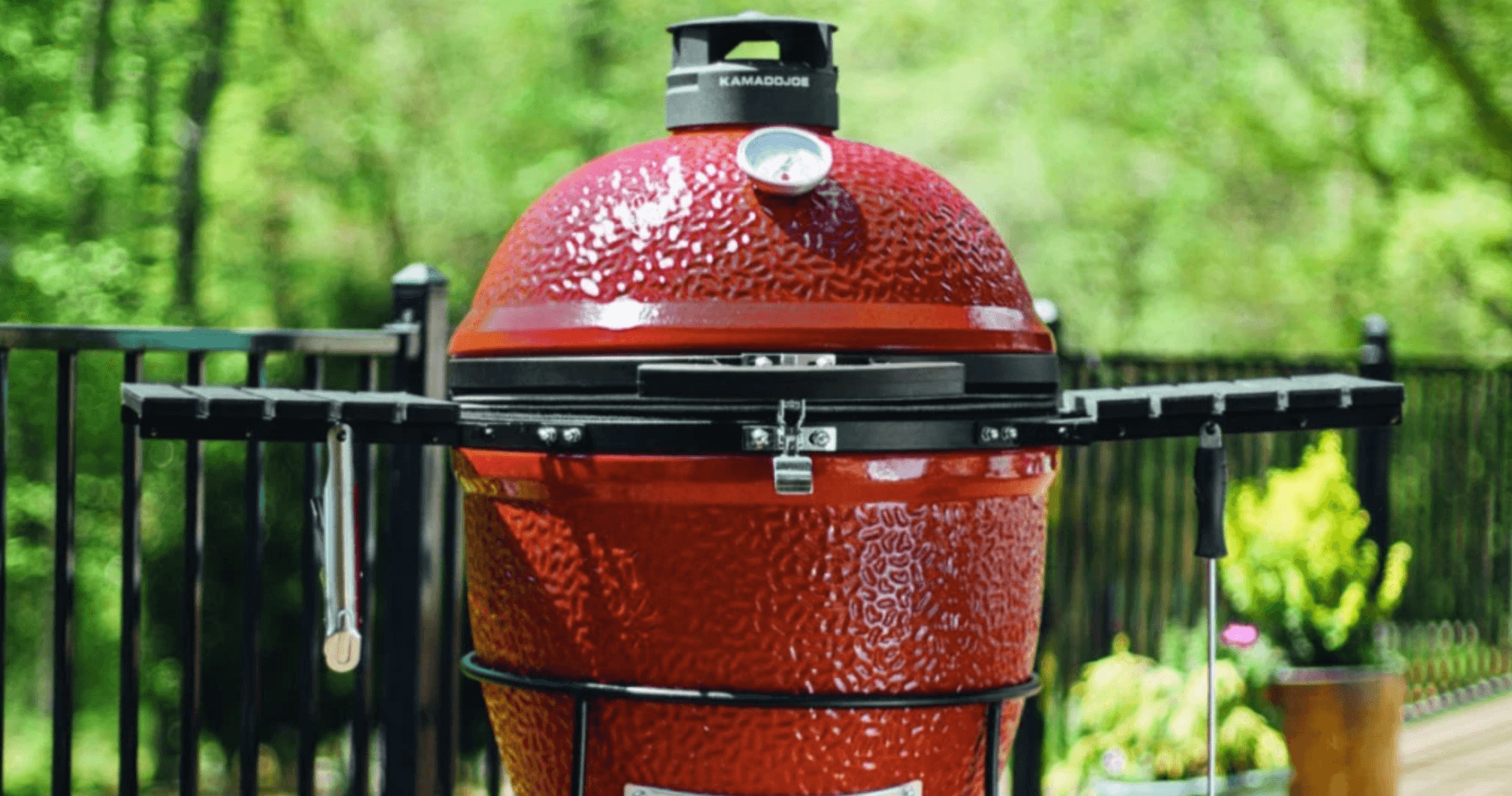
Kamado Grills are technically charcoal grills, but we feel like they’re deserving of their own class when it comes to types of grills. The Kamado grill has exploded in popularity in recent years in the United States.
It’s a ceramic grill which conceptually originated in China over 3000 years ago in the form of clay pots. Technology improvements have taken us from there to the modern day Kamado grill, which is a personal favorite and is capable of making incredible food.
Lumpwood charcoal is the fuel of choice for Kamado grills, and they deliver a truly delicious, smoky flavor to your food.
Ceramic Kamado Grills
The most common material used in construction of Kamado grills is ceramics. A high fire ceramic grill will almost never crack or fault. The ceramic material is also spectacular for heat retention, so ceramic grills are perfect for cooking pizza as it’s common for temperatures upwards of 750 degrees Fahrenheit to be achieved. Due to built in airflow systems, airflow can be controlled to bake or roast foods as well.
Stainless Steel/Cast Aluminum Kamado Grills
Some Kamado grills feature a stainless steel bowl inside of the unit to hold the charcoal. There’s also some kamado grills that have a stainless steel or cast aluminum exterior shell. The main difference in stainless steel vs ceramic comes in heat retention and weight.
Stainless steel kamado grills will be less heavy, and also won’t insulate quite as well as a ceramic grill. That’s not to say you can’t turn the heat up on a stainless steel, you just probably won’t achieve 750 degree Fahrenheit temperatures like a ceramic grill would.
Kamado Grills Pros and Cons
Pros:
- You can cook and BBQ food for long periods of time without having to constantly manage the fire.
- Flavor wise, you won’t find cookers that make tastier food than a proper kamado grill.
- Construction materials and design lean on 3000 years worth of technology for optimal grilling capabilities.
- Ceramic Kamado grills can reach temperatures of 750 degrees Fahrenheit.
- Multi-functional – probably the best grill for making pizzas. Also perfect for smoking, roasting, baking, searing, or grilling.
Cons:
- Kamado grills – especially ceramic ones – are pretty expensive. View these grills as a long term investment.
- They weigh quite a bit so they aren’t easy to move around. Plan on hunkering a Kamado grill down in one spot.
- Probably not the best choice for those new to grilling – mostly because of the price and because they have a learning curve
Kamado Grill Recommendation
With multiple cooking racks, an abundance of accessories, and an easy-lift lid, the Kamado Joe Classic III has everything you love to see in a ceramic grill.
Kamado Grills – Additional Reads:
Electric Grills
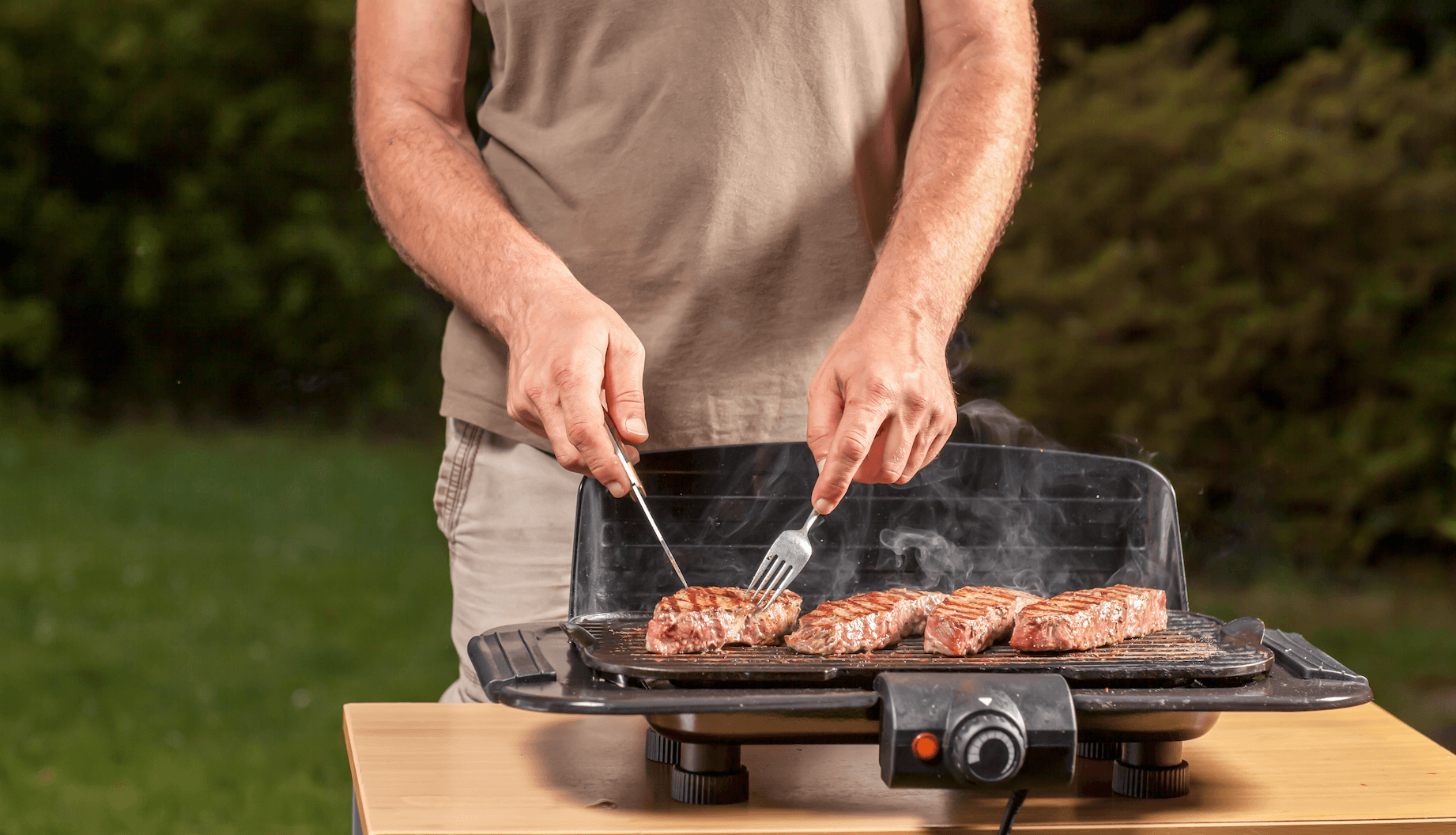
As you’d expect by the name, electric grills are powered by traditional power outlets and are designed for use indoors. It’s possible to use an electric grill indoors due to the absence of smoke.
*Important note* DO NOT use a grill, electric or otherwise, indoors if the grill emits any kind of smoke. Smoke/open fires indoors are dangerous and at a minimum could cause smoke damage to your walls. There are units designed that are smokeless grills specifically made for indoor use.
Electric grills are typically small in size and are designed for countertop use. If you’re looking for a simple way to grill some food quickly, an electric grill is a great option.
Electric Grills Pros and Cons
Pros:
- Plug and play – simply find a power outlet, plug the grill in, and get cooking!
- Designed for use indoors, which is super convenient. Great for apartment use.
- Clean up and maintenance is extremely easy.
- Ongoing fuel costs are almost nil.
- Prices for electric grills are generally pretty cheap.
Cons:
- Electric grills often don’t have a ton of cooking space – you won’t be able to grill for a large gathering or family reunion.
- You must have a traditional electric outlet nearby – so it’s hard to take an electric grill on the go.
- You don’t get the traditional smoky BBQ flavor from an electric grill.
Electric Grill Recommendation for Beginners
Portable Grills
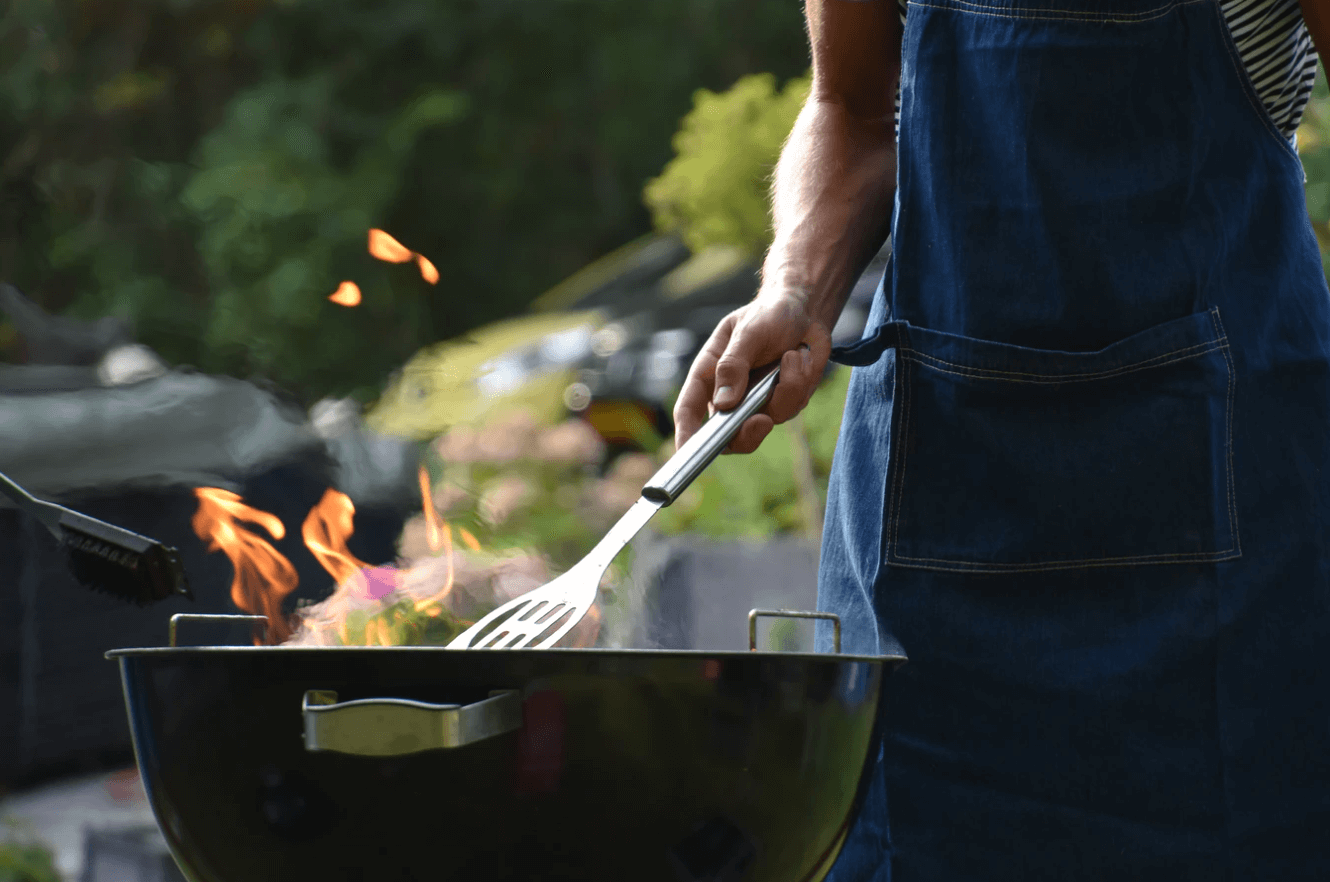
Portable grills are a sub class of grill that could technically also fall into some of the other categories on this list. So whether it’s powered by propane or charcoal, a portable grill is one that you can take with you on the go. It’s the perfect way to grill delicious food camping, tailgating, or wherever else your travels might take you.
Portable Grills Pros and Cons
Pros:
- Great for tailgating or camping, you can have delicious grilled food on the go.
- Can be used at home too. They’re typically small in size so they won’t take up a ton of space on your patio or deck.
- Since portable grills are typically smaller, they run on the lower end of the price spectrum. You can find a very cost efficient portable grill.
Cons:
- What you gain in portability you sacrifice in cooking area. Portable grills typically aren’t the best option for large cookouts or gatherings.
- Be careful to purchase a grill that’s well made from a reputable brand. Some bad manufacturers cut corners, especially on the cheaper portable grills.
Portable Grills – Additional Reads:
Frequently Asked Questions
How Many Types of Grills Are There?
There are four main types of grills when it comes to fuel type, which are gas, charcoal, pellet, and electric grills, and we are going to tell you about each of them below in a little more detail.
Gas Fueled Grills
This is one of the most popular types of grills, and it is well-loved for its high levels of convenience. Gas grills are able to ignite with the push of a button, and they can heat up and cool down quite quickly. They typically feature temperature control knobs, which allows the user to have complete control over the temperatures that they are using to cook.
The majority of gas grills will have more than one burner, which allows you to create multiple cooking zones, so you can get everything cooked at once, rather than one at a time. They don’t get as hot as charcoal grills, but they do usually peak within the 400 °F to 600 °F range. Natural gas grills will have an unlimited fuel supply, but they do require you to instal a natural gas line from your grill to your home.
Charcoal Fueled Grills
Charcoal is able to deliver impressive levels of heat, up to 700 °F. They also create a mouthwatering char-grilled flavor with everything that you cook on them, and they are usually the least expensive grill option. They can either be used to grill directly over the coals, or indirectly if you move the coal over to one side, which allows you to cook foods slower.
The main downside to using a charcoal grill is that you will need to use briquettes or lump charcoal for fuel, which can be difficult to light at times, especially if you have never used this type of grill before.
There also aren’t any temperature control knobs, which means that temperature regulation will take much more technique than gas grilling. They also take longer to heat up and cool down due to their excellent levels of heat retention.
Wood Pellet Fueled Grills
Wood pellet grills are becoming more and more popular, and they use hardwood pellets as their main source of heat. They also offer a combination of desirable features from both gas and charcoal grill styles. Pellet girls are powered by electricity, which is very convenient, and they can also be ignited by a simple switch.
Pellet grills will have user-friendly knobs and variable temperature settings, and they can be ignited by a power switch. They also provide your food with an irresistible hardwood smoked flavor. The only downside is that they aren’t as widely available, and they are often more on the expensive side than other grilling options.
Electric Powered Grills
Electric grills are the highest on the list when it comes to convenience and user-friendly features. However, they will not get as hot as other grill options, and you won’t get any of the delicious char grilled or smoked flavoring. Although, they do plug in, which is really convenient, and they heat up very quickly, so you can get started almost straight away.
Electric grills do not need any fuel, and they are really easy to use. One of the best things about them is that they are easy to clean, and their small size makes them great for places with limited space.
What is the Healthiest Type of Grill?
Eating healthy on the grill is totally possible!
The healthiest type of grill is a gas grill, and this is because the fuel will burn cleanly and without any volatile organic compounds contaminating your food. They don’t produce smoke or soot, which means that your food will be healthier in comparison to other cooking methods.
You can also use a cooking grid with this type of grill to allow fats to render and drip away from the food, reducing the number of calories and boosting the overall flavor.
What is the Easiest Grill to Use?
The easiest type of grill to use is either a gas grill, pellet grill, or electric grill. Each of these grill types are incredibly easy to heat up and are also simple to clean once you’re done cooking. Better yet, they all make spectacular food even with the ease of use factor!
What is the Best Grill for Steaks?
Charcoal or wood-fired grills are typically the best types of grills to use for grilling steaks, which is due to the additional flavor and charring that they are able to provide. A charcoal grill also gives you the option to add different types of wood to the fire to change and improve the smokiness and enhance the overall flavor of the meat.
What is the Most Versatile Grill?
Pellet grills are super versatile, and most of them will have temperature ranges from 200-500 degrees, which allows you to smoke, grill, bake, or sear on your pellet grill. Kamado grills are equally as versatile but require more work to build your fire.
Which Grills Last the Longest?
The grills that typically last the longest are those that are made from powder-coated steel or high quality stainless steel, as these will be the most durable and resistant to corrosion. However, heavier-duty stainless steel is also a great option as it will last for a very long time.
Choosing the right grill will involve considering the quality, features, style, and price of the product that you are looking at. Using a stainless steel grill will ensure that your grill will be resistant to corrosion, and the grill will not be easily scratched, dented, or damaged. When it has been covered, it can last for many years.
Types of Grills – Wrap Up
Be sure to think about all of the things that you want out of your grill. Looking for that traditional smoky BBQ flavor? A charcoal, Kamado, or pellet grill is probably the way to go. Convenience more important to you? A gas, electric, or portable grill may be a better fit.
In any case, I hope this rundown of the types of grills out there has been helpful to you! Did you end up purchasing one? Which one did you get? Let us know in the comments section below.


